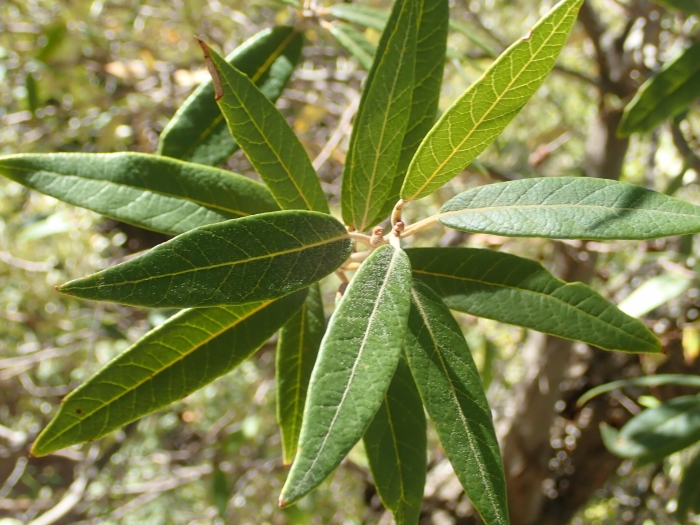Silverleaf Oak
(Quercus hypoleucoides)
Silverleaf Oak (Quercus hypoleucoides)
/
/

Cricket Raspet
CC BY 4.0
Image By:
Cricket Raspet
Recorded By:
Copyright:
CC BY 4.0
Copyright Notice:
Photo by: Cricket Raspet | License Type: CC BY 4.0 | License URL: http://creativecommons.org/licenses/by/4.0/ | Rights Holder: Cricket Raspet | Publisher: iNaturalist | Date Created: 2023-11-22T10:37:54-08:00 |

























Estimated Native Range
Summary
Quercus hypoleucoides, commonly known as Silverleaf Oak or Whiteleaf Oak, is a deciduous tree native to the southwestern United States and northern Mexico, including the mountains of southern Arizona and New Mexico. It is typically found in moist canyons, ridges, and mixed coniferous forests at elevations of 5,000 to 8,000 feet, where it plays a role in the local ecology as a post-fire resprouter and habitat provider. The Silverleaf Oak can grow as a large shrub or small to medium-sized tree, reaching up to 30 feet in height, with a rounded to irregular crown. Its distinctive dark green lanceolate leaves with silver-white undersides are a key identifying feature, and they can provide a striking visual contrast in the landscape.
The Silverleaf Oak is valued for its adaptability to high elevation landscapes and its ability to resprout vigorously after fires, making it an important species for reforestation and natural recovery projects. It is also appreciated for its ornamental qualities, such as the shimmering effect of its foliage in the breeze. In cultivation, it prefers well-drained soils and can tolerate dry conditions once established, making it suitable for xeriscaping. It requires full sun to part shade and is relatively low-maintenance. While not commonly used in urban settings, it can be an attractive addition to native plant gardens, naturalized areas, and wildlife habitats.CC BY-SA 4.0
The Silverleaf Oak is valued for its adaptability to high elevation landscapes and its ability to resprout vigorously after fires, making it an important species for reforestation and natural recovery projects. It is also appreciated for its ornamental qualities, such as the shimmering effect of its foliage in the breeze. In cultivation, it prefers well-drained soils and can tolerate dry conditions once established, making it suitable for xeriscaping. It requires full sun to part shade and is relatively low-maintenance. While not commonly used in urban settings, it can be an attractive addition to native plant gardens, naturalized areas, and wildlife habitats.CC BY-SA 4.0
Plant Description
- Plant Type: Shrub, Tree
- Height: 25-30 feet
- Width: 15-20 feet
- Growth Rate: Slow
- Flower Color: N/A
- Flowering Season: Spring
- Leaf Retention: Evergreen, Semi-deciduous
Growth Requirements
- Sun: Full Sun
- Water: Low
- Drainage: Medium
Common Uses
Drought Tolerant, Low Maintenance
Natural Habitat
native to the southwestern United States and northern Mexico, including the mountains of southern Arizona and New Mexico
Other Names
Common Names: Mexican Blue Oak, Whiteleaf Oak
Scientific Names: , Quercus hypoleucoides, Quercus confertifolia, Quercus hypoleuca,
GBIF Accepted Name: